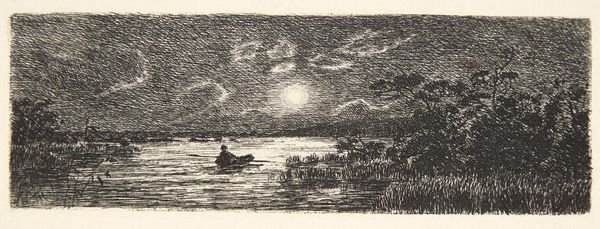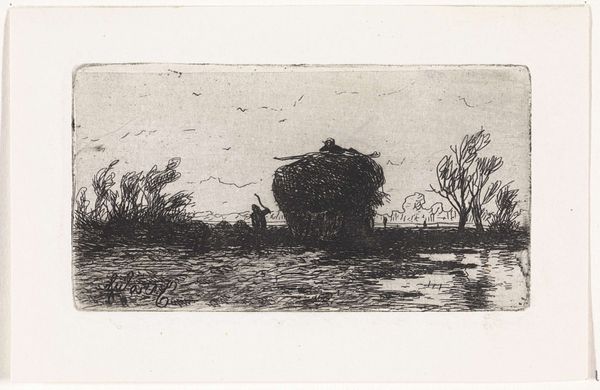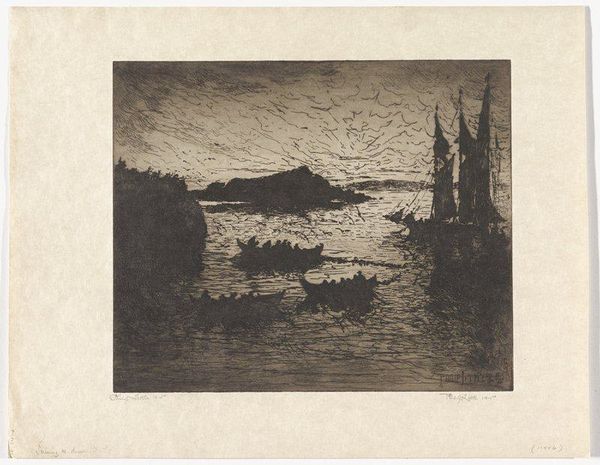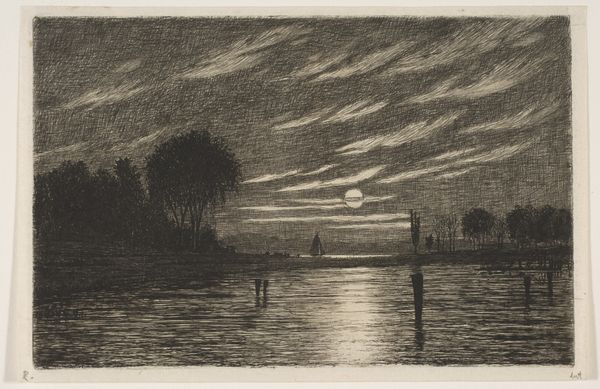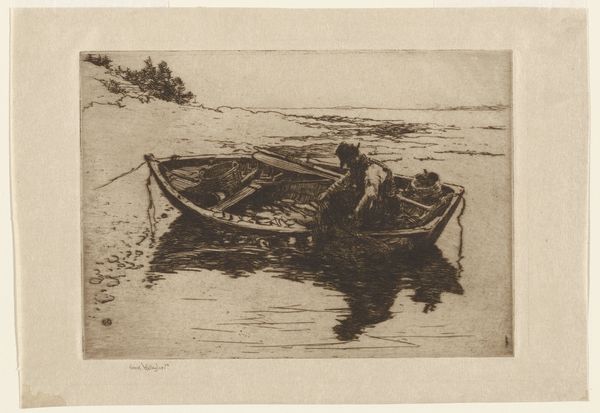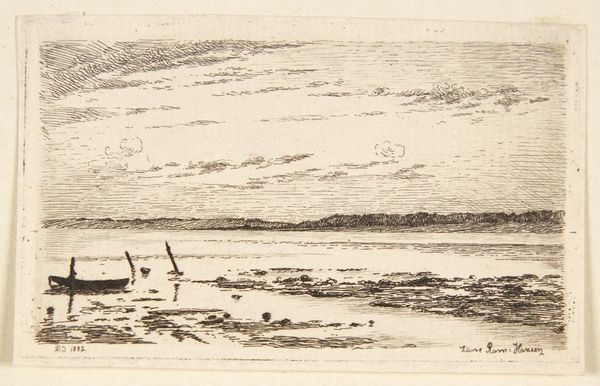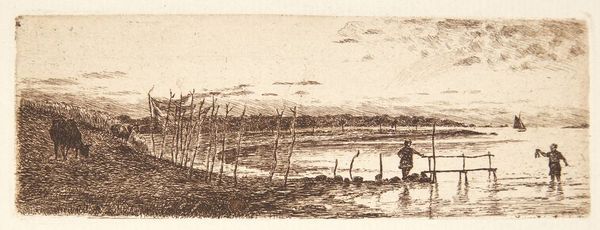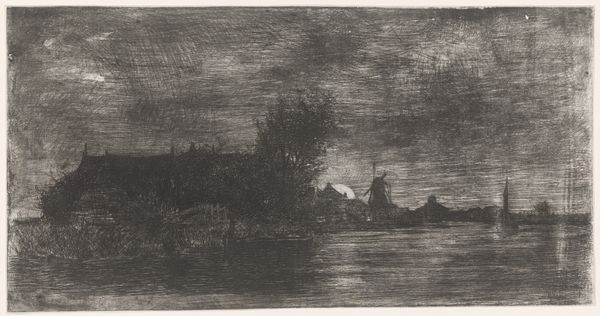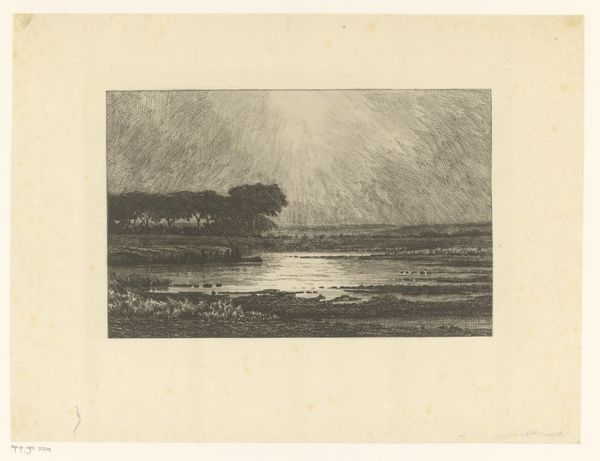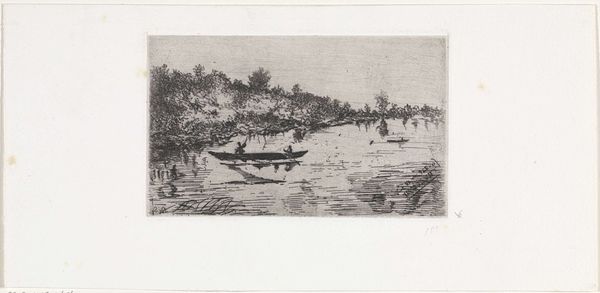
print, etching
# print
#
etching
#
landscape
#
realism
Dimensions: 49 mm (height) x 140 mm (width) (plademål)
Curator: Louise Ravn-Hansen’s etching, "Måneskin på Knudsø ved Ry," dating to 1893, offers a glimpse into the Danish landscape tradition. It is currently held at the SMK, the Statens Museum for Kunst. Editor: It’s immediately striking. The moonlight dominates, creating this almost unsettling chiaroscuro effect over a seemingly tranquil waterscape. It’s deceptively simple, yet deeply atmospheric. Curator: Deceptive indeed. Ravn-Hansen was working within the realist movement, a period that focused on accurate depictions. The print medium itself offered accessibility. Did her work offer representation of previously exclusive landscapes to a wider audience? Editor: The dense network of lines suggests painstaking work, I'm really drawn to the physical process, the labour evident in building up these tonal layers with repeated etching. This medium allows her to explore gradations of light and shadow. What was her social status in her world and her access to material? Did she do a lot of landscape, or other styles too? Curator: Interestingly, the choice to represent the scene at night might point to a desire to explore interiority rather than just outward appearances. It deviates, even if subtly, from daytime representations, inviting the viewer into the landscape differently, or at a different remove, if you will. There are, of course, broader movements occurring, within Scandinavian painting. Editor: I appreciate the dark palette and how that relates to materiality and realism, although I agree there's also something dreamlike in this contrast between the dark and the light. But the technique itself isn't hidden—we can feel the incised lines creating that almost oppressive darkness as a tactile process. I see an attention to production itself. Curator: Her contribution, perhaps, was bringing a modern sensibility to that tradition and engaging the broader audience of printmaking and accessibility within exhibitionary forces and popular sentiment for these landscapes. Editor: It is also accessible due to the choice of process, material and texture, as this offers her more freedom and fluidity in her process that opens doors and creative output that has brought us to appreciating the scene. Curator: I appreciate your perspective; I, too, now feel differently seeing the landscape with renewed awareness and attention. Editor: And it reminds me again of how intimately an artist's labor can intertwine with the perception of the finished work.
Comments
No comments
Be the first to comment and join the conversation on the ultimate creative platform.
